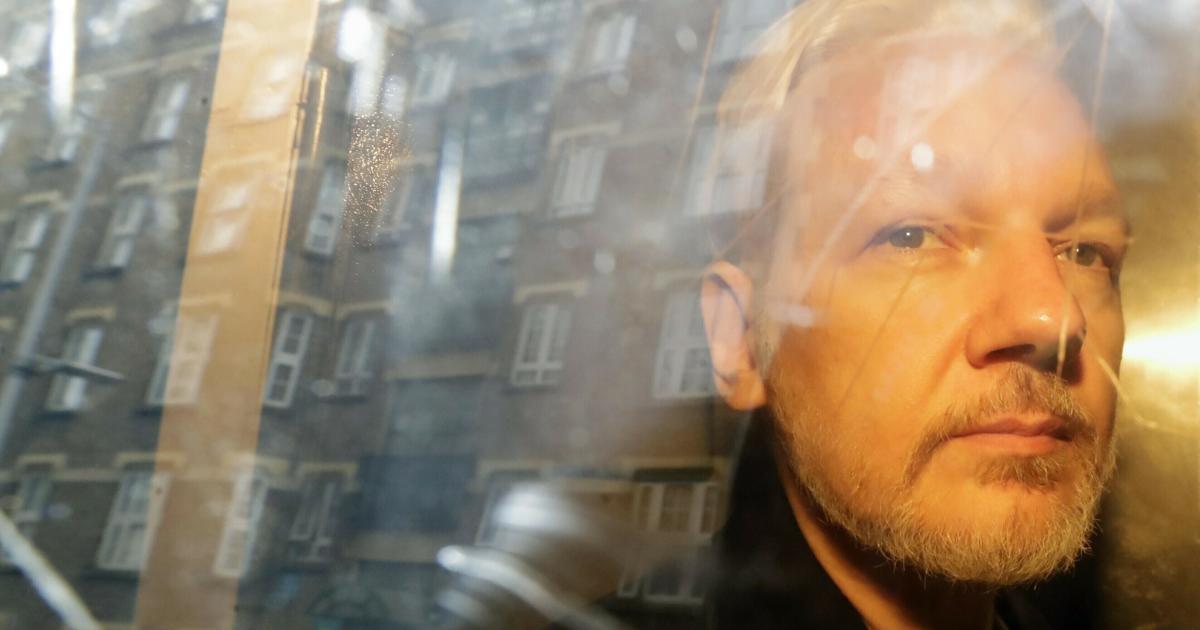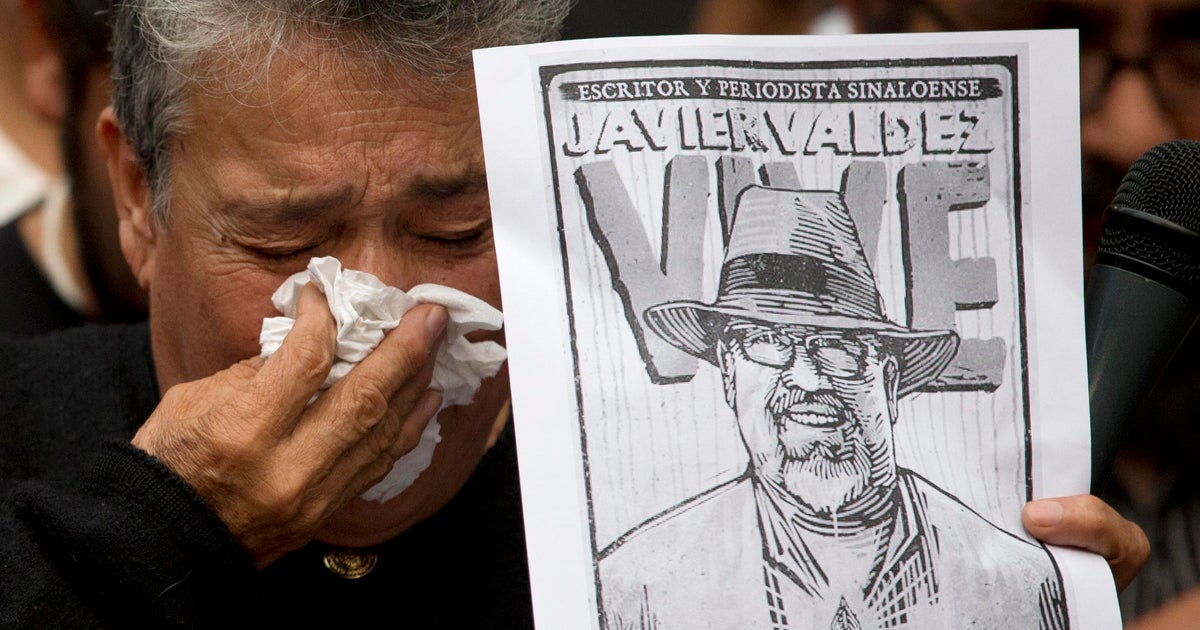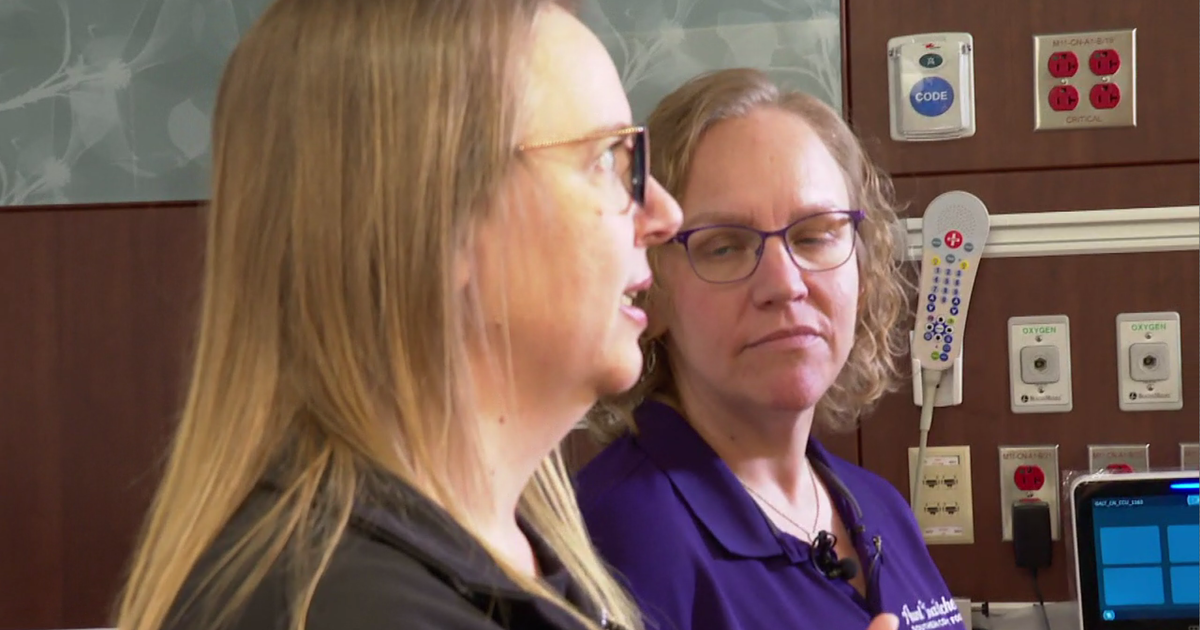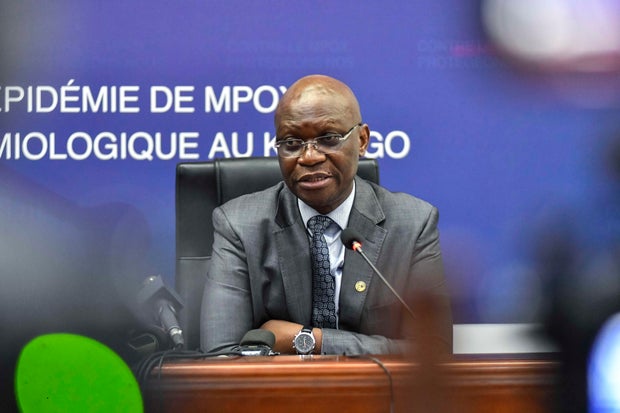CBS News
What to know as Julian Assange faces a ruling on his U.S. extradition case over WikiLeaks secrets

London — Lawyers for Julian Assange were making their final appeal to a U.K. court Tuesday against plans for the WikiLeaks founder to be extradited to the U.S. to face espionage charges related to government secrets he spilled on his website. Assange, who has been imprisoned in London for almost five years, used WikiLeaks to publish a huge number of confidential documents and other materials, some of which related to war and espionage, arguing the public had a legitimate right and need to possess the information.
The 52-year-old Australian journalist and activist has been battling the American extradition bid for more than a decade. On Tuesday, his legal team was to ask two London High Court judges to grant him a new appeal hearing against the British government’s 2022 decision that he can be legally extradited to the U.S.
Yui Mok/PA Image/Getty
Assange’s wife Stella walked into the court Tuesday through a large group of supporters demanding her husband’s immediate release.
What is this hearing about?
If the judges grant Assange the right to launch a fresh appeal it will enable him to ask the European Court of Human Rights to block the extradition. If the appeal is rejected — and possibly even if the court rules in his favor, he’s likely to be put on a plane to face the U.S. courts as the extradition order has been signed for about a year and a half.
The High Court judges, Victoria Sharp and Jeremy Johnson, could take weeks to consider their ruling, but the hearing is scheduled to take place for two days, so a verdict could be issued as soon as Wednesday.
Matt Dunham/AP
What are the charges against Assange in the U.S.?
In 2019, a federal grand jury in Virginia indicted Assange on 18 charges over the publication of classified documents in 2010. The charges include 17 counts of espionage and one charge of computer intrusion.
In a statement, the U.S. Department of Justice said Assange was complicit in the actions of Chelsea Manning, a former U.S. Army intelligence analyst, in “unlawfully obtaining and disclosing classified documents related to the national defense.”
One of the most contentious of WikiLeaks’ publications was video from a 2007 U.S. military helicopter strike in Baghdad that killed 11 people.
What sentence could Assange face if convicted?
Assange could face up to 10 years in prison for every count of espionage he’s convicted on, and five years for the conspiracy to commit computer intrusion, according to the Department of Justice.
If he were convicted on all the charges, he could face a total of 175 years in prison, though the sentence would likely be lower.
What do Assange’s supporters say?
The fight to stop Assange’s extradition to the U.S. has been linked by many of his supporters to the fight for press freedom and the right to a fair trial. The Guardian newspaper argued in its editorial section this week that journalists need whistleblowers such as Assange, particularly on matters of national security.
Rebecca Vincent, campaign director for the Reporters Without Borders group, said in a statement that even if this final appeal is rejected, “it remains within the U.S. government’s power to bring this judicial tragedy to an end by dropping its 13 year-old case against Assange and ceasing this endless persecution. No one should face such treatment for publishing information in the public interest. It’s time to protect journalism, press freedom, and all of our right to know.”
Assange’s physical and mental wellbeing have also been called into question.
Amnesty International have said if Assange is extradited he faces a “risk of serious human rights violations including possible detention conditions that would amount to torture and other ill-treatment.”
“There could not be more at stake in a single court case than there is in Julian’s case,” Stella Assange said in a statement issued Monday, calling for supporters to protest in front of the Royal Courts of Justice in London on Tuesday and Wednesday, when the appeal hearings are scheduled to take place. “Journalists must have the right to report the facts that governments and corporations want to hide, otherwise a truly free press is impossible.”
In an interview with the BBC, she said her husband would not survive an extradition to the U.S. because of his physical and mental fragility.
“This case will determine if he lives or dies, essentially,” she told the CBS News partner network.
What was Assange arrested for in the U.K.?
In 2012, Assange took refuge at the Ecuadorian Embassy in London to avoid being extradited to Sweden, where he was facing sexual assault allegations that were later dropped.
After Assange spent about seven years holed up in the embassy, Ecuador revoked his asylum status in 2019, when the Central American country’s president said his government had “reached its limit on the behavior of Mr. Assange.”
Assange was formally placed under arrest by London’s Metropolitan Police the moment he left the embassy for failing to surrender to the court over a warrant issued in 2012, and he has been in custody ever since.
CBS News
Accused mastermind of journalist’s murder wanted by Mexico — but U.S. has called him a “protected witness”

Mexico has asked the United States to extradite the suspected mastermind behind the murder of journalist Javier Valdez after he was arrested on drug charges, the attorney general said.
Damaso Lopez Serrano — who the Justice Department says is known as “Mini Lic” — is accused of ordering the 2017 killing of Valdez, an award-winning journalist and AFP contributor who covered the narcotics trade.
The alleged former high-ranking member of the Sinaloa Cartel was arrested on Friday in Virginia on charges of trafficking fentanyl. Lopez Serrano is the son of Damaso Lopez Nunez, who launched a struggle for control of the cartel following the arrest of its leader, Joaquin “El Chapo” Guzman.
Mexico’s Attorney General Alejandro Gertz described Lopez Serrano as the “mastermind” behind Valdez’s murder.
“We have already prosecuted the rest of the perpetrators and they are in jail,” he told a news conference.
Valdez was shot and killed in his car on May 15, 2017 in the Sinaloa state capital of Culiacan near the offices of his weekly newspaper Riodoce.
Enric Marti / AP
Investigators believe Lopez Serrano ordered the hit because he was angry about information published by Valdez about the Sinaloa Cartel’s internal power struggles.
Mexico has made several extradition requests for Lopez Serrano, who surrendered to U.S. authorities in July 2017 for drug trafficking and cooperated in exchange for a reduced sentence. At the time, the U.S. Drug Enforcement Administration said Lopez Serrano was “believed to be the highest-ranking Mexican cartel leader ever to self-surrender in the United States.”
He was released from prison on parole in 2022.
Gertz said that Mexico had asked “on countless occasions” for Lopez Serrano to be handed over, but Washington declined because he had become a “protected witness” and “was giving them a lot of information.”
He voiced hope that with Lopez Serrano’s latest arrest “there are more than enough reasons” for the United States to finally grant Mexico’s request.
Rebecca Blackwell / AP
Wracked by violence related to drug trafficking, Mexico is one of the world’s most dangerous countries for journalists, news advocacy groups say.
Reporters Without Borders says more than 150 newspeople have been killed in Mexico since 1994 — and 2022 was one of the deadliest years ever for journalists in Mexico, with at least 15 killed.
Media workers are regularly targeted in Mexico, often in direct reprisal for their work covering topics like corruption and the country’s notoriously violent drug traffickers.
Most recently, in October, gunmen killed a journalist whose Facebook news page covered the violent western Mexico state of Michoacan. Then less than 24 hours later, an entertainment reporter in the western city of Colima was killed inside a restaurant she owned.
CBS News
2 sisters, 7 years apart in age, also receive heart transplants 7 years apart in Chicago

CHICAGO (CBS) — Two sisters have grateful hearts after they both received heart transplants at the same age—seven years apart.
Younger sister Meredith Everhart and older sister Abbey Cannon are now bonded by a genetic condition and a second chance at life.
“What’s ironic is that when she needed a heart transplant, was exactly the same age I needed a heart transplant,” said Cannon. “Seven years apart in age, seven years apart within 30 days of transplant, and our birthdays are within 30 days.”
The sisters share a special bond of getting a second chance at life, which they both received at the age of 38 years old.
Both sisters suffer from hypertrophic cardiomyopathy—otherwise known as HCM.
The genetic condition is a form of heart disease that causes the heart muscle to thicken.
In 2012, Cannon had chest pain. She was misdiagnosed in Nashville, Tennessee, and got a second opinion at Northwestern Medicine in 2016.
“Within six months, I was inpatient on an aortic balloon pump waiting for a heart,” Cannon said. “I ended up getting my heart 32 days later, So my date is February 27, 2017.”
Just months after Cannon’s transplant, Everhart was diagnosed with HCM too. She tried medication and participated in clinical trials, but her condition kept getting worse.”
“For me, it was, she’s right—I was in denial for a long time,” said Everhart, “and I didn’t want to be sick. I was in my 20s. I was in my early 30’s. I was like, this is not happening. I saw how bad she suffered.”
In May 2022, Everhart got COVID-19, and it sent her into heart failure.
She was added to the transplant list one year later.
“I got the call on January 29 of this year, 2024, and it’s been a journey,” Everhart said. “It’s been fantastic though. Northwestern has been great.”
Cannon said she can’t stress enough how important it is to become an organ donor.
“Had we not had someone that gave that most selfless gift, neither of us would be here,” she said.
CBS News
Congo says mystery disease behind dozens of deaths of women and children finally identified as severe malaria

Johannesburg — For weeks it was dubbed simply “Disease X.” But the mysterious flu-like disease that has killed more than 143 people — mainly women and young children — in the Democratic Republic of Congo has finally been identified.
“The mystery has finally been solved,” Congo’s health ministry declared in a statement on Tuesday. “It’s a case of severe malaria in the form of a respiratory illness.”
The health agency said malnutrition in the hardest-hit region had weakened the local population’s immunity, leaving them more vulnerable to the disease. People who contracted the malaria infection have exhibited symptoms including headache, fever, cough and body ache.
The Congo’s health minister had told journalists the country was on “maximum alert” over the spread of the previously unidentified disease, and health officials told CBS News in early December that the remoteness of the epicenter of the outbreak and lack of a diagnosis made it difficult to launch a concerted response.
Samy Ntumba Shambuyi/AP
At least 592 cases were reported after the alert was first raised by Congo’s health ministry on Oct. 29. The ministry said the disease had a fatality rate of 6.25%. More than half of the deaths recorded were children younger than five who were severely malnourished when they contracted the disease, according to the World Health Organization.
At a press briefing on Dec. 10, WHO Director-General Tedros Adhanom Ghebreyesus said 10 out of 12 samples from patients suffering from the mysterious disease had tested positive for malaria, but he said they were still testing at the time for other diseases.
The Congolese government had sent a rapid intervention team to the Kwango province, 435 miles southeast of capital city Kinshasa, consisting of epidemiologists and other medical experts. Their objective was to identify the disease and mount a suitable response. Government officials had earlier warned locals to avoid touching people infected with the illness or the bodies of those who had died.
Congo has suffered from many disease outbreaks in recent years, including typhoid, malaria and anemia. The country has also grappled with an mpox outbreak, with more than 47,000 suspected cases and over 1,000 suspected deaths from the disease, according to the WHO.
Anti-malaria medicine provided by the WHO was being distributed at local health centers in Congo, and WHO officials said more medical supplies were due to arrive in the country Wednesday.
It’s the rainy season in Congo, which often sees a rise in malaria cases, and will certainly complicate treating those most at risk.












